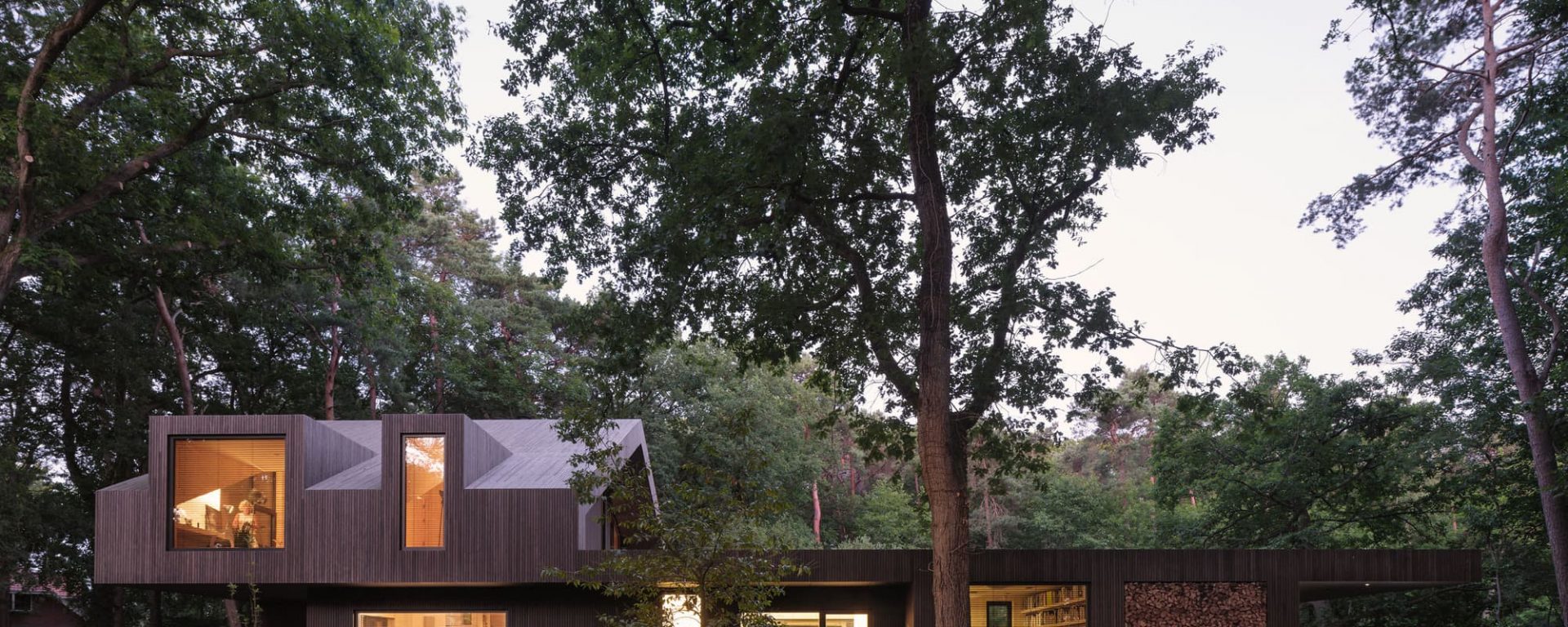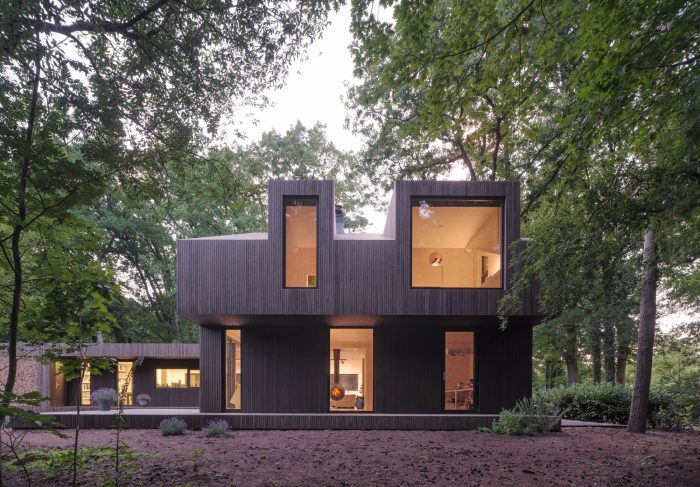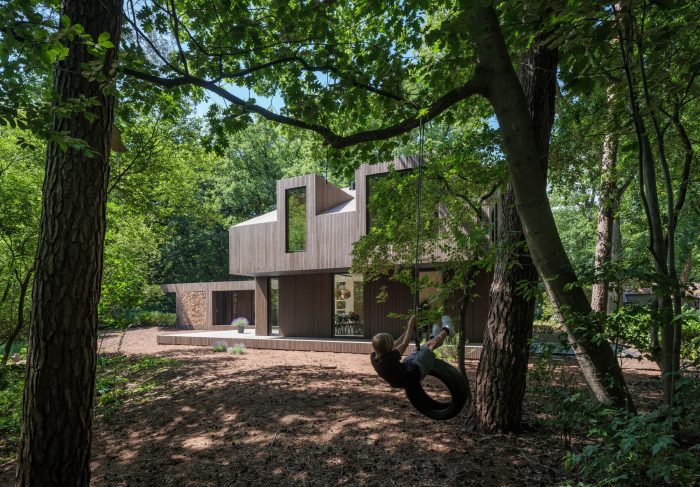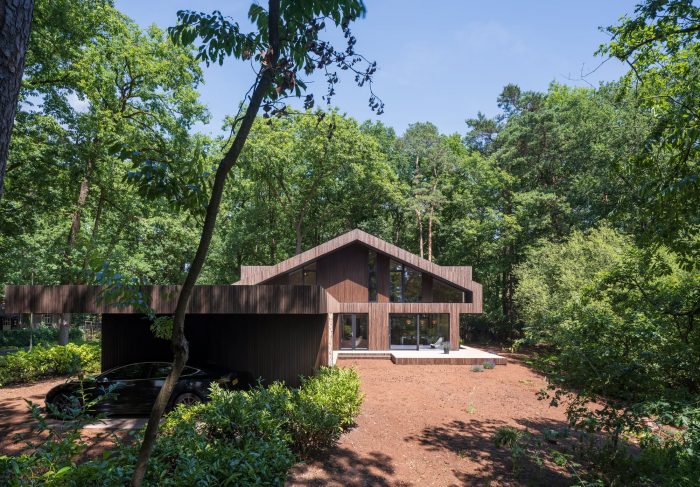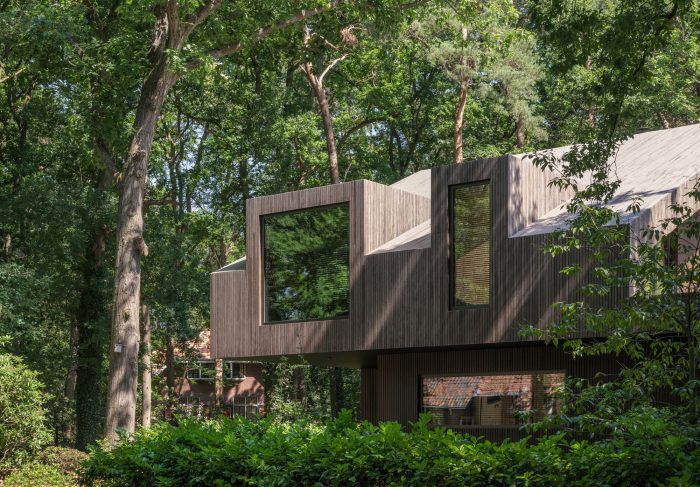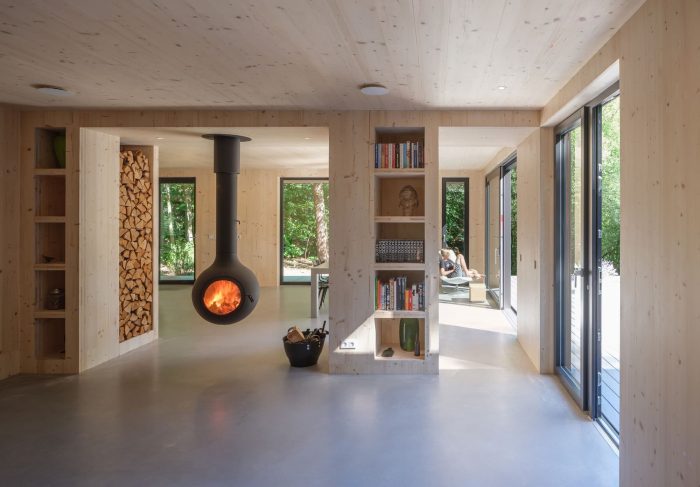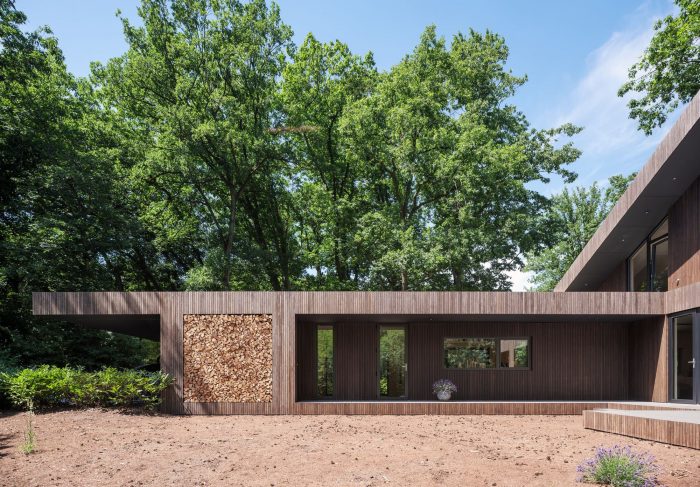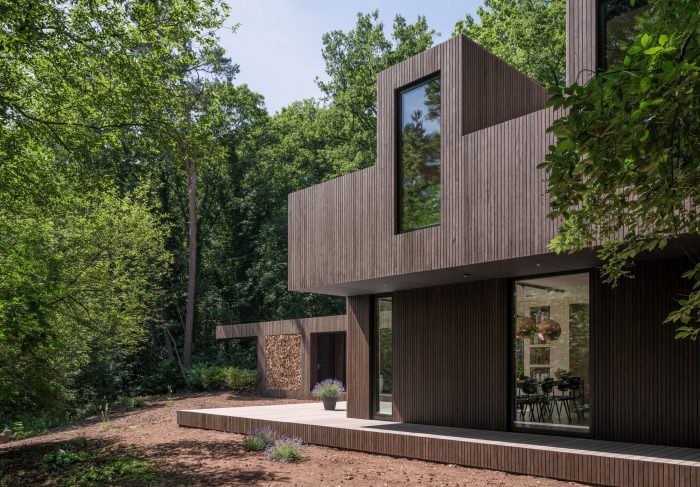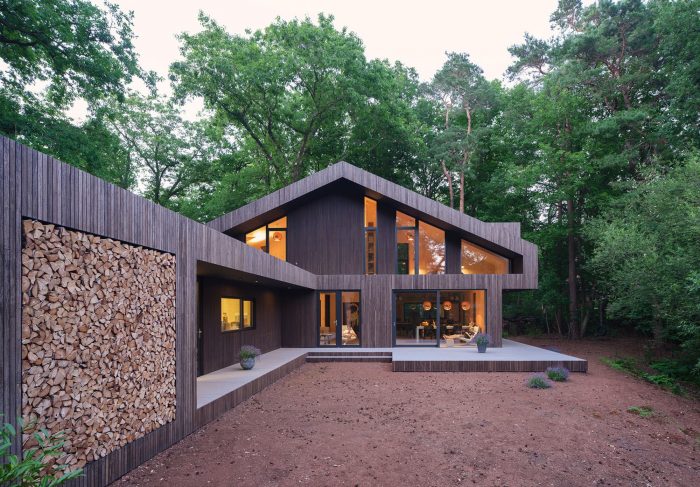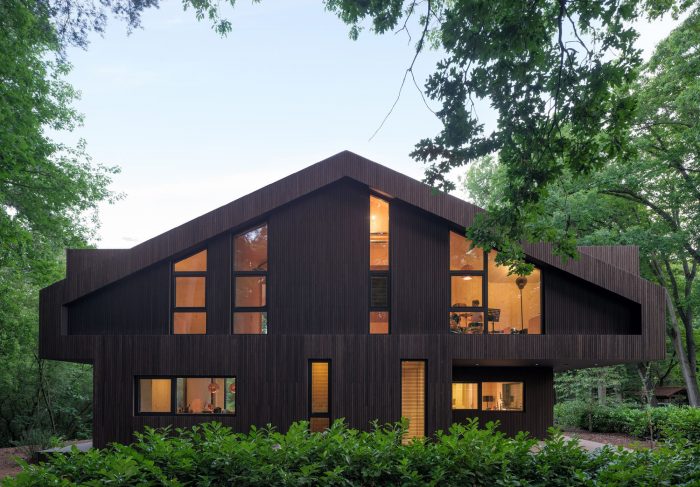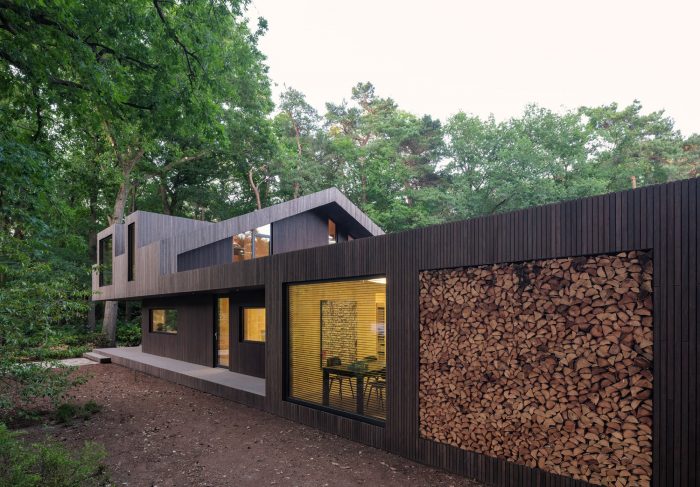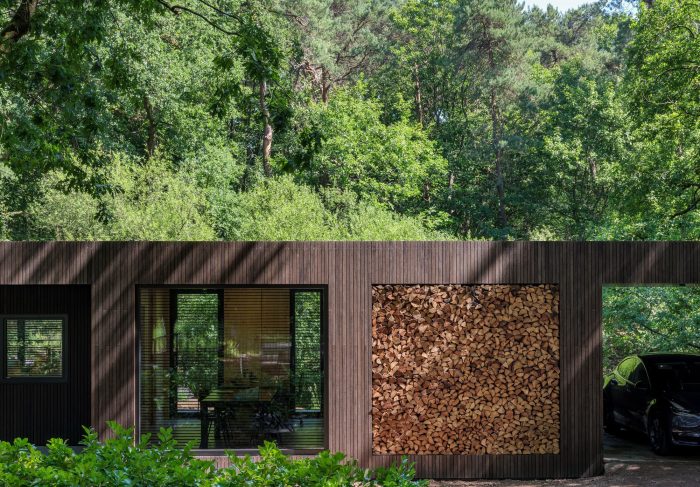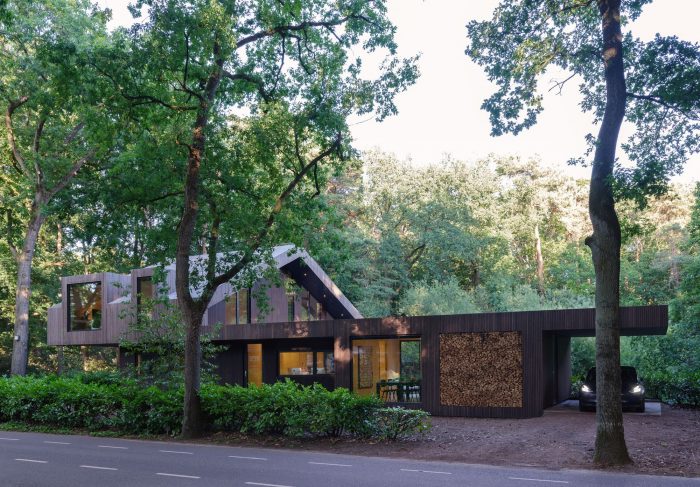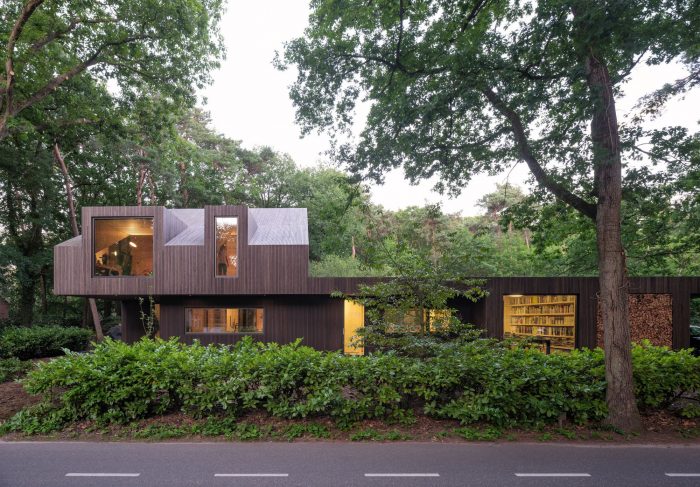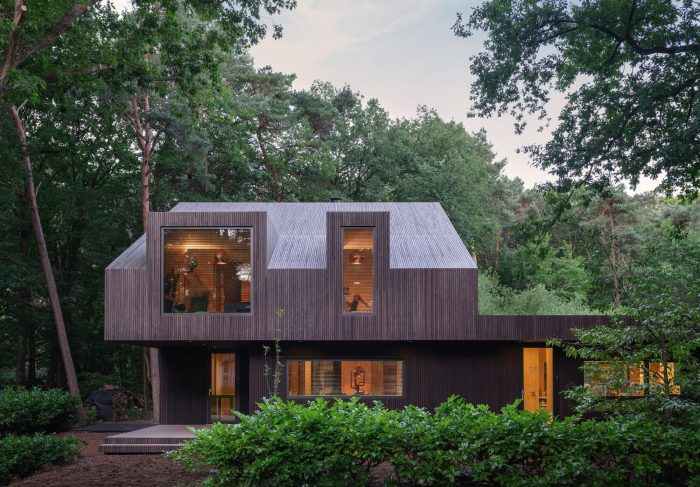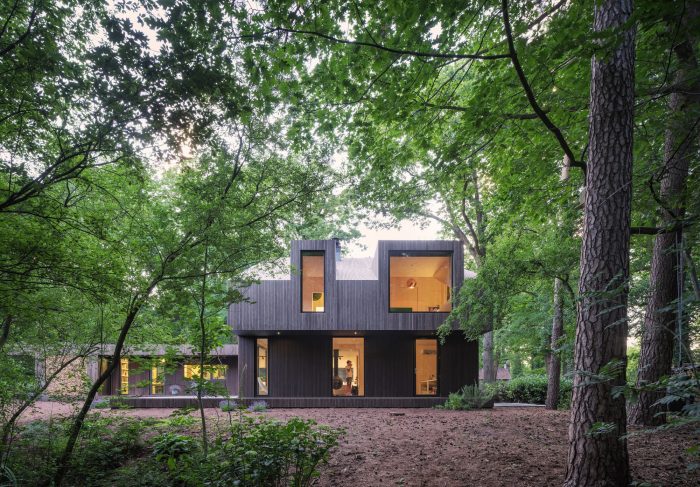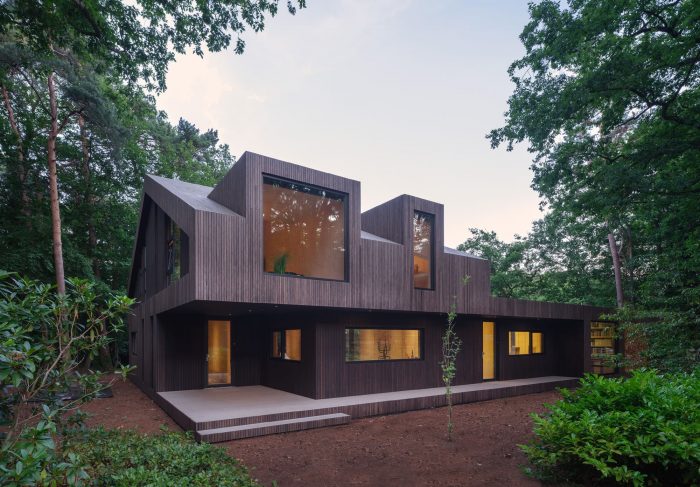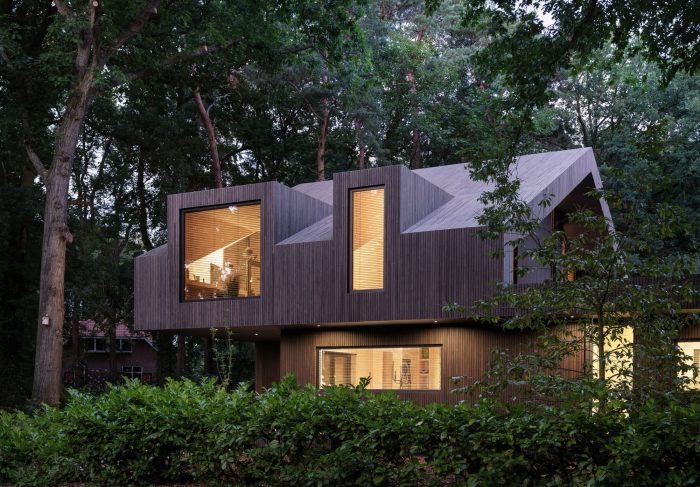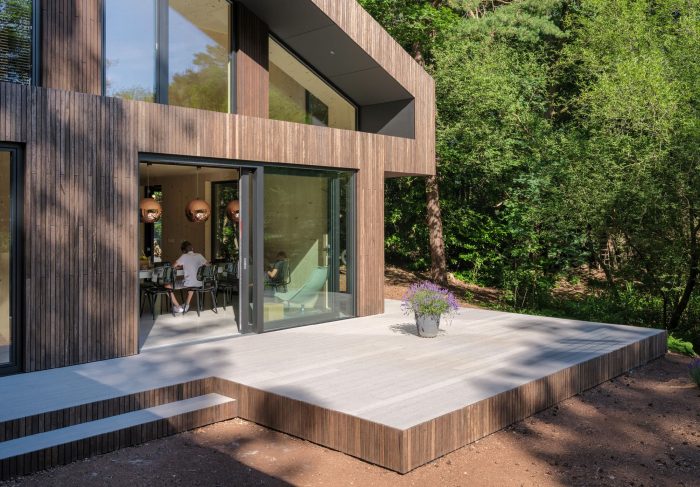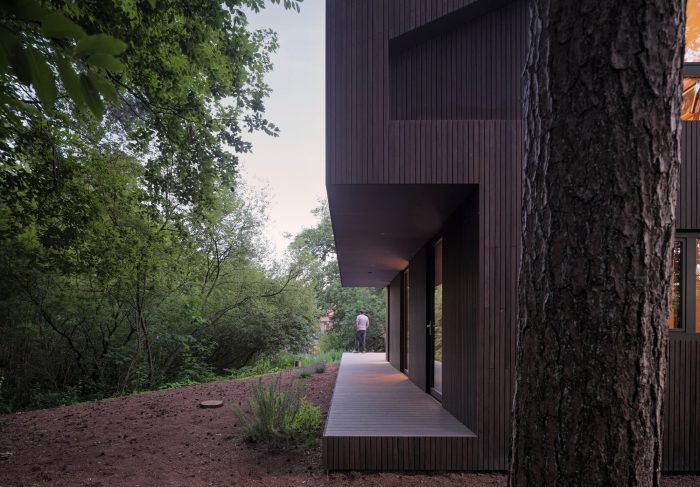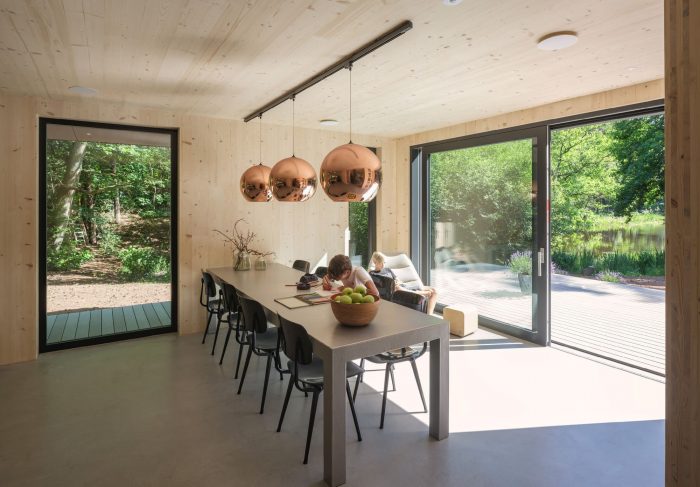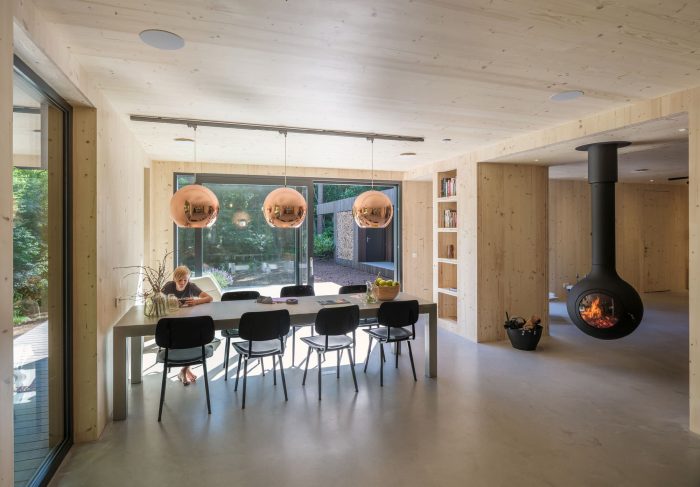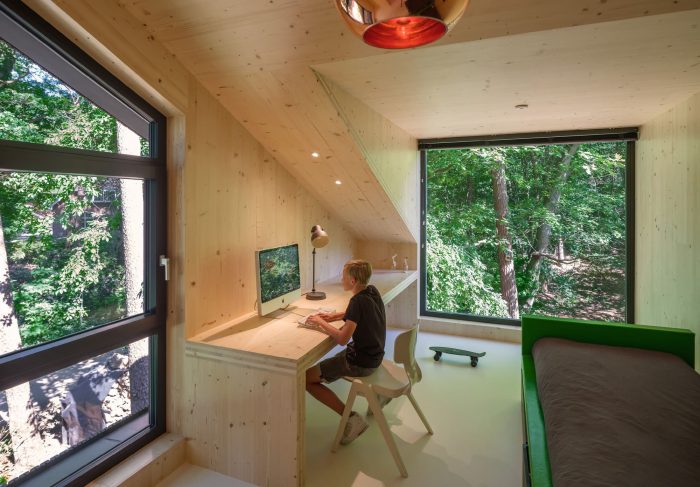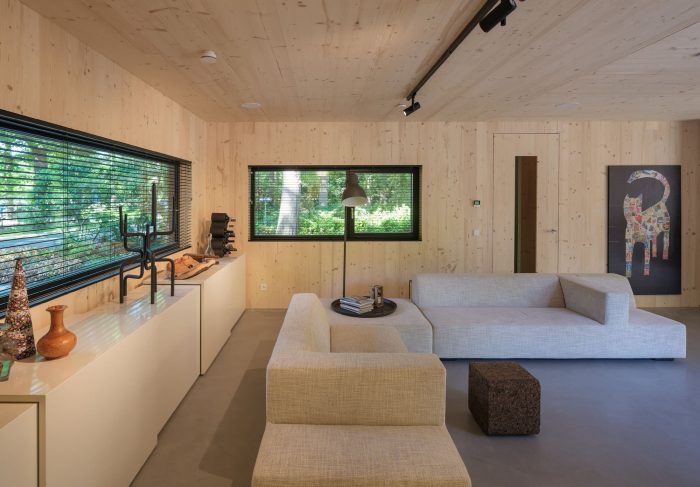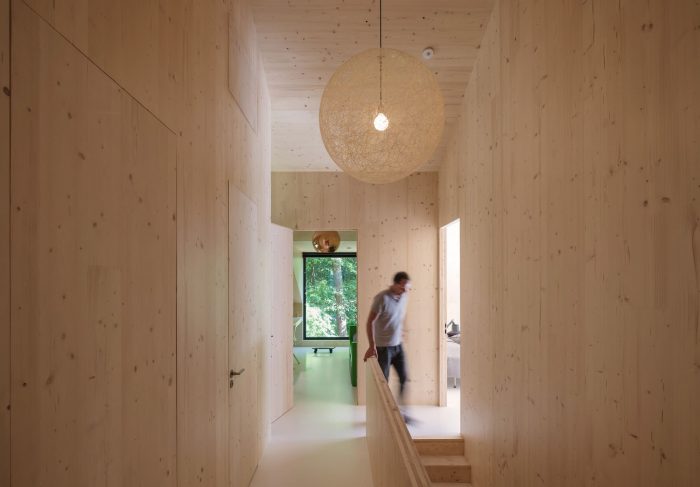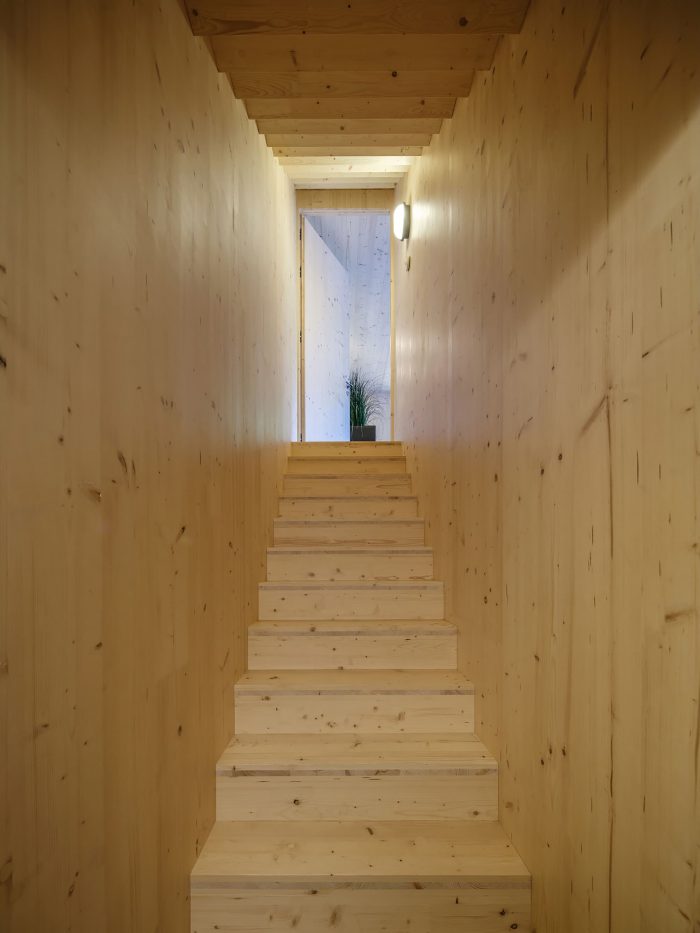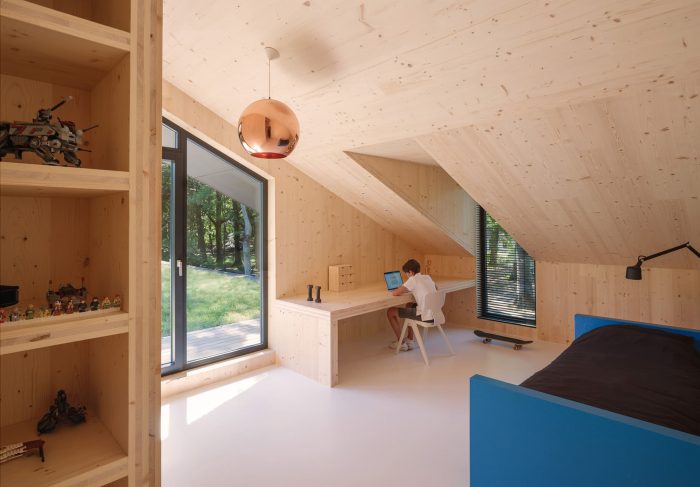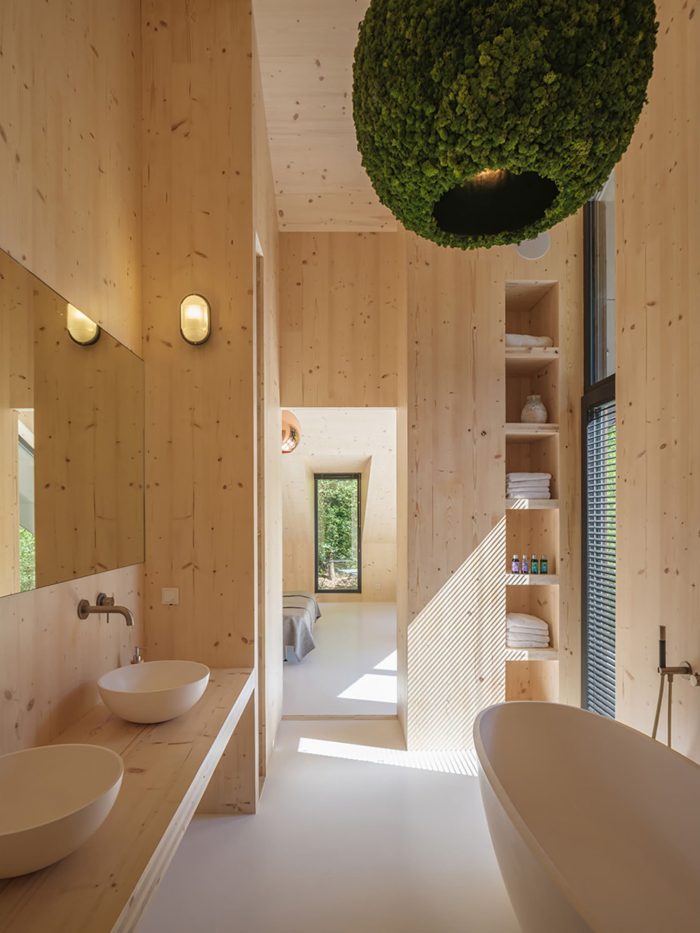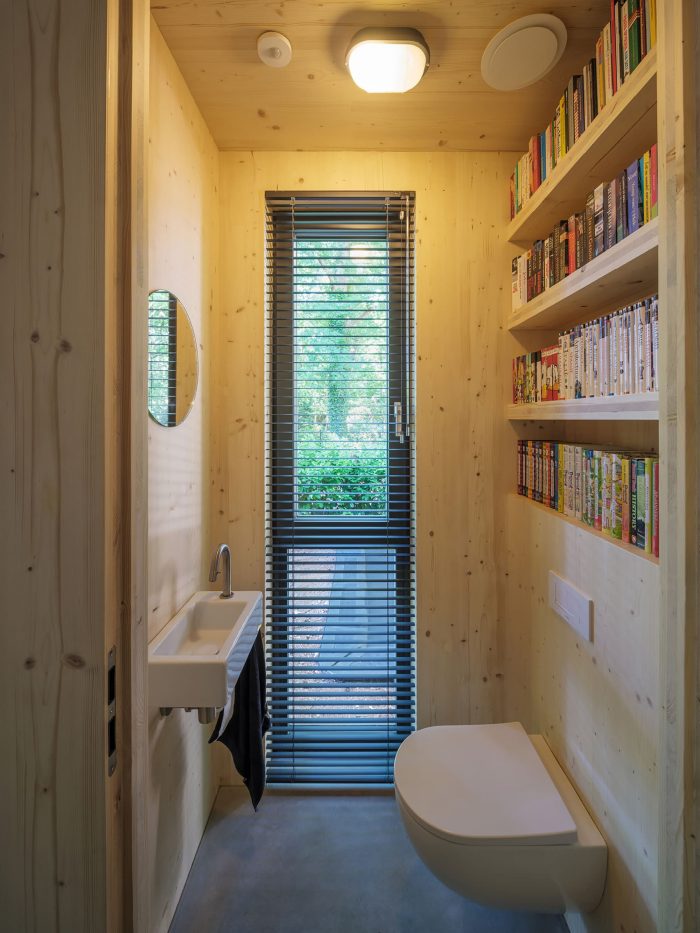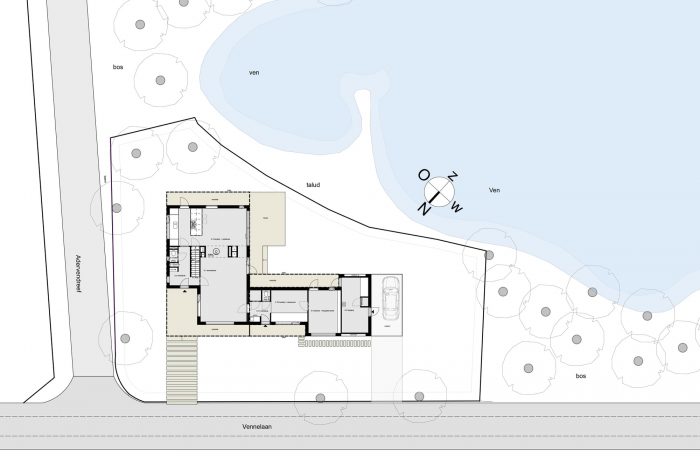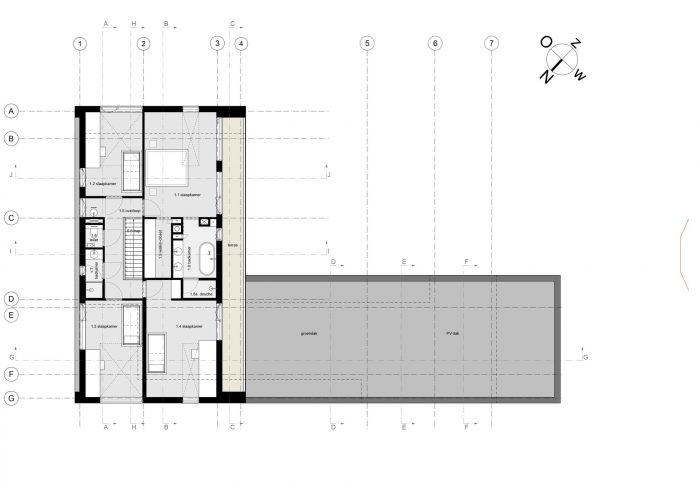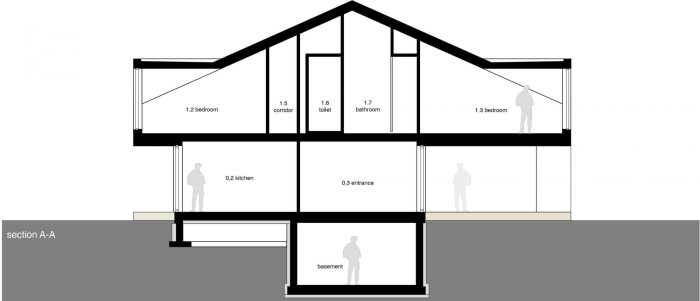Speehuis不仅在外观和位置上独树一帜,最重要的是其非常可持续和健康的设计。这种能源中立的设计几乎完全由循环和生物材料组成。
Speehuis is not only unique in its appearance and location but above all, for its very sustainable and healthy design. The energy-neutral design consists virtually entirely of circular and bio-based materials.
背景。这座房子被一片树林所包围,并建在沼泽地附近。通过抬高房子并提供阳台(由竹板条和四面的可回收复合材料组成),在自然和房子之间有一条细微的界限,使伟大的户外活动很容易进入。由于花园回归自然,没有围墙,该地块流向森林,提供了美丽的景色。外墙和倾斜的屋顶采用未经处理的 “高密度 “竹木复合板条,由于其自然的外观,与周围的绿色环境完全融合在一起。
Context. The house is surrounded by a wooded area and built adjacent to a fen. By raising the house and providing verandas, which consist of bamboo slats and a recycled composite on all sides, there is a fine line between nature and the house which leaves the great outdoors to be easily accessible. As the garden is given back to nature and is devoid of the enclosure, the plot flows into the forest, offering beautiful views. The facade and the sloping roof are finished with untreated ‘high density’ bamboo-composite slats which, due to their natural appearance, completely blend in with the verdant surroundings.
设计。房子的形式、尺寸和布局都是为一个有三个孩子的家庭量身定做的,同时它还与SPEE建筑事务所的办公场所相邻。阳台和遮阳篷是建筑设计中的连接元素,它们将办公室、住宅和户外空间相互连接,从而将前两者统一起来。安装在所有卧室的雨棚构成了倾斜屋顶和外墙的一个组成部分。因此,卧室的空间非常宽敞。
The design. The house’s form, size, and layout are all tailored to the needs of a family with three children, while it also adjoins SPEE Architects’ office premises. The verandas and awnings are the connecting elements in the design of the building, which attach the office, home, and outdoor space to one another, thus unifying the former two. The dormers fitted in all bedrooms form an integral part of the sloping roof and exterior walls. The bedrooms are therefore highly spacious.
错落有致的层高和宽阔的外墙使房间有一种与众不同的感觉,同时又无一例外地提供了全方位的绿色和单纯的视野。房子的细节设计是一丝不苟的,以确保排水沟和水棒被隐藏起来,而屋顶和墙面的覆盖层则彼此无缝融合。 空间设置、大型外墙的构成、阳台、遮阳篷以及可持续材料的选择共同创造了一个独特的现代生活和工作环境,与自然融为一体。
The staggered heights of the stories and expansive facades lend the rooms a sense of distinction, while invariably offering an all-around view of the greenery and mere. The detailing of the house was worked out meticulously, to ensure that the guttering and water bars are concealed, while the roof and wall cladding merge seamlessly with one another. The spatial set-up, the composition of large facades, the verandas, the awnings, and the choice of sustainable materials jointly create a unique and contemporary living and working environment that becomes one with nature.
可持续性和材料的健康使用。这座房子是由循环和生物基材料制成的,可以拆卸和改造。例如,外墙和倾斜的屋顶是由未经处理的 “高密度”(生物基)竹条制成。例如,外墙和斜屋顶由未经处理的生物基’高密度’竹子覆层组成,有一个隐蔽的点击固定系统,可以方便地拆卸。在制造 “高密度竹子 “的过程中–竹子纤维和树脂在高温下被压缩–竹子中的天然糖分被焦糖化,使其具有抗腐性,因此适合未经处理的应用。
Sustainability & healthy use of materials. The house is made of circular and biobased materials, which can be disassembled and adapted. For example, the facade and the sloping roof are made of untreated ‘high density’ (biobased) bamboo slats. The exterior walls and sloping roof, for example, comprise untreated biobased ‘high density’ bamboo cladding with a concealed click-fixing system that can be conveniently dismantled. During the process applied to manufacture the ‘high-density bamboo – in which bamboo fibers and resin are compressed at high temperature – the natural sugar in the bamboo caramelizes, rendering it resistant to rot and therefore suitable for untreated application.
整个外壳,包括楼梯、室内门、书桌和橱柜,都是由坚固的交叉层压木材(CLT)制成的,这使房子充满了温暖的气氛。预制的木材外壳,包括所有容纳系统的凹槽,是在一周的时间内建成的。由于采用了抗紫外线的涂层,木材不会发生变色,因此保持了其美观的浅色。坚固的木材结构是完全可拆卸的,可适应的,可回收的,比混凝土轻30%,而且–与外部覆层类似–使用可再生的原材料制造。整个建筑使用木材的决定也意味着大量的二氧化碳被储存起来(而不是像混凝土那样被排放出来),从而创造一个健康和更舒适的室内环境。
The entire shell, including the stairs, interior doors, desks, and cabinets, is made of sturdy cross-laminated timber (CLT), which lends the house a warm atmosphere. The prefabricated timber shell, including all the recesses to accommodate systems, was constructed within the space of a week. No discoloration occurs, thanks to the UV-resistant coating, and the timber, therefore, retains its aesthetically pleasing light color. The sturdy timber structure is fully dismantlable, adaptable, recyclable, 30% lighter than concrete, and – similarly to the exterior cladding – manufactured using renewable raw materials. The decision to build using timber throughout also implies that a considerable amount of CO₂ is stored (rather than being emitted, as is the case with concrete) thus creating a healthy and more comfortable indoor climate.
Speehuis使用了150立方米的云杉木,这意味着93,388公斤的二氧化碳被储存在建筑内。这相当于103个家庭一年的用电量或一辆中级轿车784,773公里的废气排放量。欧洲的森林在6秒钟内就储存了这么多的二氧化碳。Speehuis使用的所有木材都来自负责任地管理的森林。
150m3 of spruce wood has been used in the Speehuis, which means that 93,388 kg of CO2 is stored within the building. That is the equivalent of the annual electricity consumption of 103 households a year or the emissions of 784,773 kilometers of exhaust gases from a middle-class car. European forests store this amount of CO2 in 6 seconds. All the wood used in Speehuis comes from responsibly managed forests.
相比之下,同样的混凝土建筑会产生46,694公斤的二氧化碳。因此,用交叉层压木材而不是混凝土建造的建筑所减少的二氧化碳总量为93,388公斤+46,694公斤=140,082公斤二氧化碳。通过使用9立方米的竹子复合材料作为外墙材料,可以额外储存15,736公斤的二氧化碳。除了节能建筑外,在建筑中储存二氧化碳也是解决气候问题的方法。
In comparison, the same building built in concrete would produce 46,694 kg of CO2. The total CO2 reduction by building in cross-laminated timber instead of concrete is therefore 93,388 kg + 46,694 kg = 140,082 kg CO2. By using a 9m3 bamboo composite as a facade material, an additional 15,736 kg of CO2 is stored. In addition to energy-efficient construction, storing CO2 in buildings is the solution to the climate problem.
Architects: Spee Architecten
Area : 352 m²
Year : 2021
Photographs :Ossip van Duivenbode
Manufacturers : Focus
Lead Architect : Bart Spee
Structural Engineer : Raadschelders Bouwadvies
Architectural Assistent : Jolijn van Keulen
Clt Builder : Javi Houtbouw
Clt Supplier : Derix
Windows And Doors : Pladeko
Cladding : Awood
City : Oisterwijk
Country : The Netherlands

